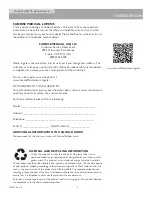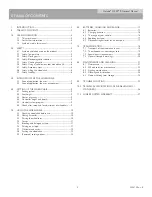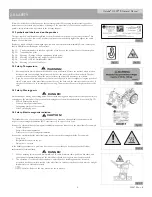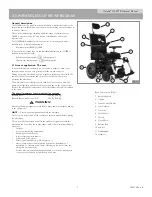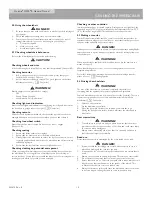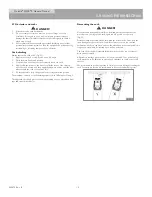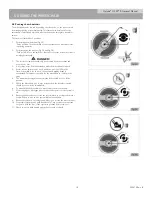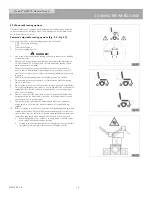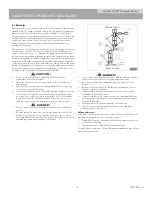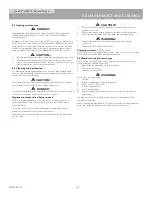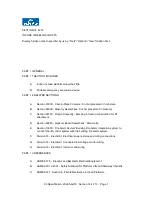
Quickie
®
Q200
®
R General Manual
253470 Rev. B
15
6.0 BATTERIES, CHARGING, AND RANGE
6.1 Batteries
Batteries are the power source for almost all of the modern mobility products
available today. The design of batteries used in mobility products is signifi cantly
diff erent to the batteries used to start a car for example. Car batteries are
designed to release a large amount of power over a short period of time, while
mobility batteries (commonly called deep cycle batteries) release their power
evenly, over a long period of time. Therefore, due to the lower production
volumes and increased technological requirements, mobility batteries are
typically more expensive.
Commonly two 12 volt batteries are used together in a mobility product, giving
a total voltage of 24 volts. The size of the battery (e.g. its available power) is
expressed in amps per hour e.g. 70amp/hr. The higher the number, the bigger
the battery size, weight and, potentially, the greater the distance you can travel.
Sunrise Medical only fi t as standard maintenance free batteries into these types
of wheelchairs. This type of battery uses a method of carrying the electrolyte
commonly referred to as ‘gel’, that is held within the battery case. As the name
implies, no maintenance is required other than regular charging. You can safely
transport this type of battery without fear of acid spilling. Furthermore, they
are approved for transportation on aircraft, trains, and ships.
CAUTION!
1.
Do not fi t car batteries to the wheelchair. Fit only deep cycle,
maintenance free mobility batteries.
2.
When the batteries are worn out, take them to the local authority
disposal point.
3.
Return the batteries directly to the battery manufacturer for recycling,
when they no longer hold a charge.
4.
The battery terminals need to be checked regularly for signs of corrosion.
If any corrosion is apparent, clean the terminals completely and apply
petroleum jelly or silicone grease to the terminal. Do not use ordinary
grease. Ensure that the terminal nut and bolt, cable clip, and exposed
cable are completely covered with petroleum jelly or silicone grease.
DANGER!
1.
Do not expose any part of the battery to direct heat (i.e. naked fl ame,
gas fi re).
2.
Be extra cautious to reduce the risk of dropping a metal tool onto the
battery. It could spark or short circuit the battery or other electrical
parts that may cause an explosion. Also take off all personal metal eff ects
and dangling objects when working on the battery.
DANGER!
1.
Do not, under any circumstances, tamper with the batteries. If in any
doubt contact your local Sunrise Medical authorized dealer.
2.
Avoid contact with acid on damaged sealed type batteries or wet
batteries.
3.
Battery acid can cause burns to the skin as well as damage to fl oors,
furniture, and your wheelchair.
4.
If battery acid comes into contact with the skin or clothing, wash
immediately with soap and water.
5.
If battery acid comes into contact with the eye, immediately fl ood the
eye with running cold water for at least 10 minutes and seek medical
attention immediately.
6.
Acid spills can be neutralized with baking soda and water.
7.
Take care to keep batteries upright at all times, especially when
transporting your wheelchair.
Safety cut-outs
In the event of a short circuit there are several safety systems built into your
wheelchair to safeguard your electrical circuits (Fig. 6.1).
1.
Fusible 100A links are connected into the battery harnesses to protect
the batteries and wiring.
2.
15A auxiliary power circuit fuses for auxiliary modules.
To replace them contact your Sunrise Medical authorized dealer, who will also
diagnose the original fault.
Fig. 6.1
Back of chair
Front of chair


